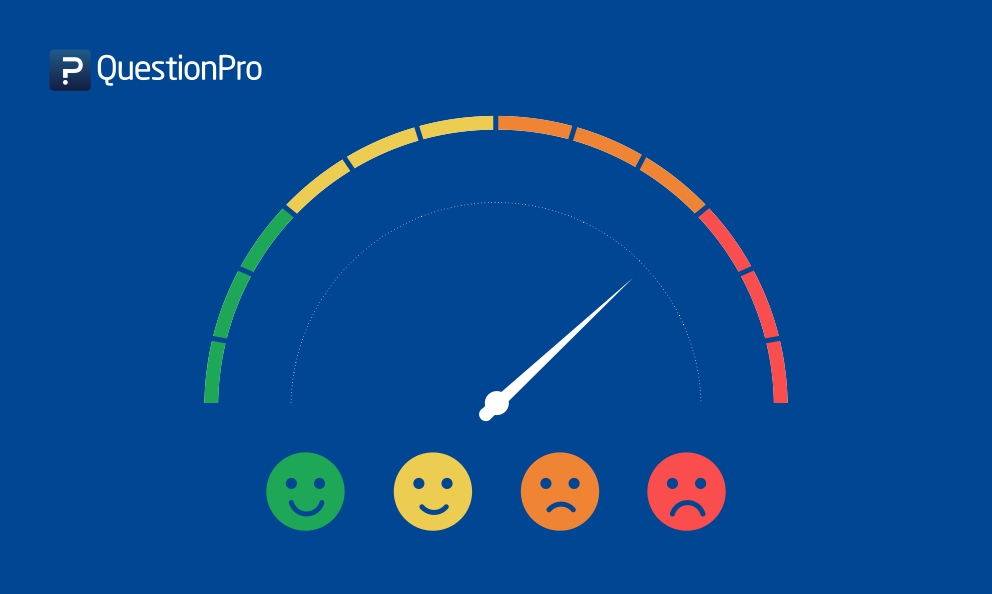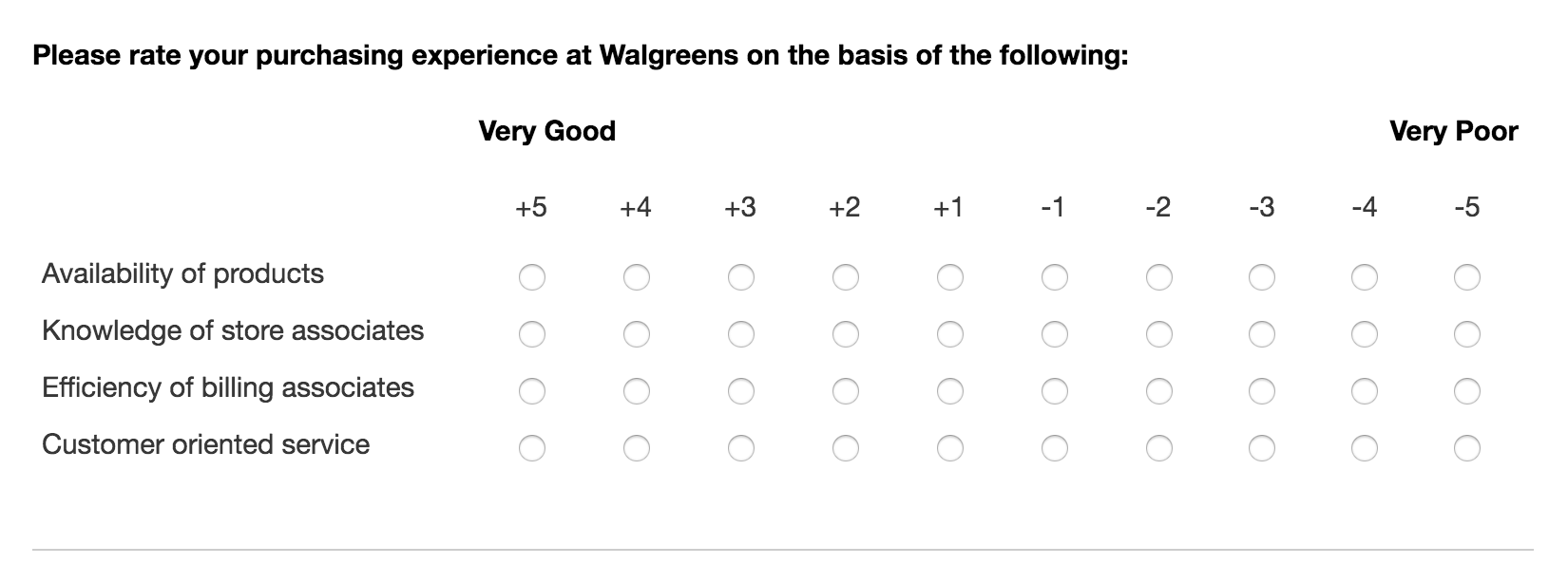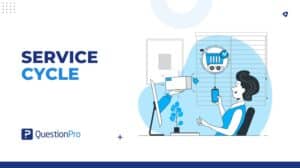
What is a Stapel Scale?
Stapel scale is defined as a rating scale that is close-ended with a single adjective (unipolar), developed to gather respondent insights about a particular subject or event. The survey question is comprised of an even number of response options without a neutral point.
For example, these options can range from any scales like +2 to -2 or +5 to -5 or even +10 to -10 and they are purely dependent on the nature of the study and the required outcome, all without a neutral point. The stapel scale can be indicated as standalone questions or even as a matrix question type where each line item is one unique adjective.
LEARN ABOUT: Graphic Rating Scale
This scale was named after its developer, Jan Stapel. Since this is a non-comparative and categorical scale, it makes it very similar to a semantic differential scale with the sole difference being the presence of only adjective in between a positive and negative category rather than having two opposing adjectives. Respondents must indicate the relevance of each characteristic to an object in the question.
LEARN ABOUT: System Usability Scale
An example of the use of staple scale question in a survey is understanding the competency level of a respondent’s supervisor on the basis of some basic skills. This question helps the surveyor understand if the top management of the company is fit to be in the role or not or if they could get to a certain level with training.
LEARN ABOUT: Event Surveys

Learn more: Nominal, Ordinal, Interval and Ratio Scale
Characteristics of Stapel Scale
The scale can be depicted either as vertical or a horizontal scale with one single adjective in the middle of the range of values and the respondent has to choose a numerical value that best defines the validity of the adjective.
- Agreement and Disagreement: A positive score accurately describes the object and a negative score is the exact opposite; the statement is incorrect. Higher up the rating scale indicates a higher acceptance with the single adjective and a lower negative score indicates the disagreement with the adjective. This directly equates to the + rating being a strong agreement and the – rating being strong disagreement.
- Data Analysis: The data collected in a stapel scale survey is treated as an interval and it can be analyzed in the same way as the data collected by using a semantic differential survey type. The results in both question types are similar.
- No Need of Bipolarity: Due to the nature of the question, one adjective and the subsequent rating is adequate to collect feedback about a certain adjective. This question type is used when there is difficulty in finding out bipolar adjectives or there is difficulty in pre-testing of adjectives to ensure their true bipolarity.
LEARN ABOUT: Bipolar Questionnaire
Where is Stapel Scale Survey used?
A stapel scale survey is used to conduct an in-depth data analysis about each metric in a question and that is done by having to select from that a numerical value is assigned to each metric or adjective. In statistical analysis, distinguishing between categorical data and numerical data is essential, as categorical data involves distinct categories or labels, while numerical data consists of measurable quantities. Stapel scale questions allow flexibility to tweak a survey in a way that suits the research objective. The survey respondent can be asked questions in a way that they offer maximum value about each metric.
Stapel scale surveys are generally used in customer-satisfaction surveys due to the nature of the questions asked and the numerical data collected. The researcher or the organization conducting survey uses stapel scale questions to rate each parameter of their product or service individually. This provides a complete snapshot of aspects and is important in understanding if their business is doing well and what is not.
Learn more: Customer Satisfaction (CSAT) Survey Questions + Sample Questionnaire Template
Why should you use Stapel Scale Questions in your survey research?
- Easy to administer: Stapel scale questions are very easy to administer due to the nature of how they are set-up. They are used effectively due to the rating nature of the responses which makes it easier for a survey respondent to answer the question correctly.
- Reduce survey drop off rate: The options provided in a question are administered separately with each adjective forming one option and one question can have multiple options. This makes it easier for a survey respondent to answer each option on the basis of each objective rather than be forced to select between two or more objectives. This reduces the drop-off rate in a survey.
- Collect actionable insights: Each objective is provided a numerical value and each adjective forces a respondent to respondent rather than leaving it blank. This helps collect a higher level of actionable insights.
Difference between Stapel Scale and Semantic Differential Questions in a Survey:
Although the data collected in both, stapel scale surveys and semantic differential scales are similar, there are some other stark differences between them. Some of the major differences are:
| Stapel Scale Questions | Semantic Differential Questions |
| In a stapel scale survey, the options are unipolar. The rating given to each question is on the basis of one objective. | In a semantic differential question, the options are bipolar. The rating provided in a question is on the basis of two polar opposite objectives. |
| There is no neutral point in a stapel scale question which means each option can describe the objective. | The semantic differential allows for a neutral point which means that a survey respondent can leave a question unanswered if the the bipolar objectives do not appropriately define the experience. |
| There is no capped number of responses as long as the number of responses are even. | There are generally seven responses from highly unlikely to highly likely. |
| Each stapel scale survey question has forced responses due to the lack of a neutral zero option. | Semantic differential survey questions provide the flexibility for unforced responses due to the presence of a neutral option. |
| The options are represented numerically. | The options are represented textually. |
Learn more: Measurement scales
Stapel Scale Survey Questions with Examples
As mentioned above, stapel scale questions can be administered as standalone vertical or horizontal questions or as a matrix question type. There can also be different numerical scales as survey responses as long as the responses are an even number of options with the lack of an absolute neutral value.
Some examples of stapel scale survey questions are:
- This question uses a +3 to -3 point matrix question type where the question aims to collect feedback on multiple attributes of a respondent’s flying experience with the airline.

- This question uses a +5 to -5 point matrix question type where the hypermarket aims to collect feedback on multiple attributes of a customer’s purchasing experience at a store.

Advantages of using a Stapel Scale
The stapel scale survey has many advantages. Some of them are:
- Easy to understand and respond to: A stapel scale question is easy to understand and respond to as there is a + and – rating system for each adjective in the stapel scale survey. This makes it very easy for each survey respondent to understand and to reply to.
- Numerical labels: Numerical labels reduce all possible ambiguity in the mind of a respondent about their feeling towards an objective or metric. This ensures that the option selected by the survey respondent numerically represents their emotions towards that object.
- Forces a response as there is no neutral or zero: A stapel scale survey helps collect the ideal or most ideal response to a question as it eliminates the possibility of a neutral answer leaving each objective to be aptly selected.
- Measures both the direction and the intensity of attitudes simultaneously: Since the stapel scale question looks to measure each objective separately, there is a deeper rooted clarity on the direction and intensity of each objective separately. The “how positive” or “how negative” throws light on the degree of each objective in the mind of the respondent.
Learn more: Close-ended questions







